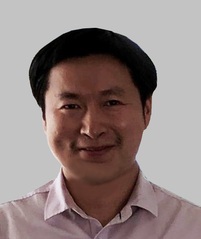Curriculum VitaeB.S. Peking University Ph.D. Princeton University hailinhl@seu.edu.cn ResearchThe research areas of Prof. Hai Lin are mathematical physics, quantum field theory and string theory. In particular, he works in gauge/gravity duality, emergent spacetime, string compactification and beyond standard model phenomenology, intersections between string theory and differential and algebraic geometry, gauge theory and quantum field theory of strong interactions, nonperturbative methods for quantum system and quantum field theory, and holographic dual methods of quantum information. 林海教授的研究领域为数学物理、量子场论和弦理论。主要研究方向为规范场论/引力对偶、涌现时空(层展时空)、弦理论的紧致化与高能物理的关系、弦理论与微分几何和代数几何的交叉、强相互作用量子场论、量子场论和量子体系的非微扰方法、量子信息的全息对偶方法。
Honors and AwardsTeachingPublicationsSelected Publications 1. H. Lin, Y. Zhu, Entanglement and mixed states of Young tableau states in gauge/gravity correspondence, Nuclear Physics B, 972, 2021, 115572. 2. H. Lin, Coherent state excitations and string-added coherent states in gauge-gravity correspondence, arXiv:2206.06524. 3. H. Lin and Y. Zhu, Coherent state superpositions, entanglement and gauge/gravity correspondence, Journal of Mathematical Physics, 62, 2021, no.5, 052301. 4. H. Lin and K. Zeng, A construction of quarter BPS coherent states and Brauer algebras, Advances in Theoretical and Mathematical Physics, 24, 2020, no.5, 1111. 5. Q. Jia and H. Lin, Calabi-Yau generalized complete intersections and aspects of cohomology of sheaves, Journal of Mathematical Physics, 61, 2020, 052301. 6. H. Lin and K. Zeng, Detecting topology change via correlations and entanglement from gauge/gravity correspondence, Journal of Mathematical Physics, 59, 2018, 032301. 7. K. Bettadapura, H. Lin, Boundary contributions to three loop superstring amplitudes, Journal of Mathematical Physics, 62, 2021, 042303. 8. H. Lin, B. Wu and S. T. Yau, Heterotic String Compactification and New Vector Bundles, Communications in Mathematical Physics, 345, 2016, no.2, 457. 9. H. Lin and H. Wang, Holographic derivation of a class of short range correlation functions, Nuclear Physics B, 947, 2019, 114728. 10. H. Lin, Giant gravitons and correlators, Journal of High Energy Physics, 1212, 2012, 011. 11. J. Wang, K. Ohmori, P. Putrov, Y. Zheng, Z. Wan, M. Guo, H. Lin, P. Gao, S.-T. Yau, Tunneling Topological Vacua via Extended Operators: (spin-)TQFT Spectra and Boundary Deconfinement in Various Dimensions, Progress of Theoretical and Experimental Physics, 5, 2018, 053A01. 12. H. Wang, L. Chen, H. Lin, W. Li, Topological and geometric universal thermodynamics in conformal field theory, Physical Review B, 97, 2018, 220407. 13. H. Lin and T. Zheng, Higher dimensional generalizations of twistor spaces, Journal of Geometry and Physics, 114, 2017, 492. 14. J. Heckman, H. Lin and S. T. Yau, Building Blocks for Generalized Heterotic/F-theory Duality, Advances in Theoretical and Mathematical Physics, 18, 2014, 1463. 15. W. Carlson, R. de Mello Koch, H. Lin, Nonplanar Integrability, Journal of High Energy Physics, 1103, 2011, 105. 16. H. Lin, O. Lunin and J. Maldacena, Bubbling AdS space and 1/2 BPS geometries, Journal of High Energy Physics, 0410, 2004, 025. 17. B. Chen, S. Cremonini, A. Donos, F. L. Lin, H. Lin, J. T. Liu, D. Vaman, W. Y. Wen, Bubbling AdS and droplet descriptions of BPS geometries in IIB supergravity, Journal of High Energy Physics, 0710, 2007, 003. 18. H. Lin and G. Narain, AdS backgrounds and induced gravity, Modern Physics Letter A, 34, 2019, 2050057. 19. E. Conde, H. Lin, J. M. Penin, A. V. Ramallo and D. Zoakos, D3-D5 theories with unquenched flavors, Nuclear Physics B, 914, 2017, 599. 20. H. Lin, Instantons, supersymmetric vacua, and emergent geometries, Physical Review D, 74, 2006, 125013. ORCID: 0000-0002-9230-9819 |

